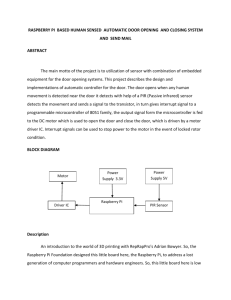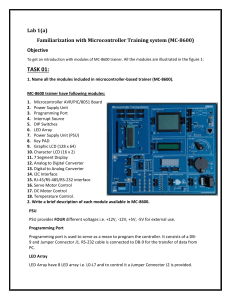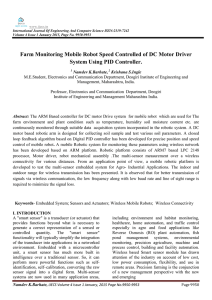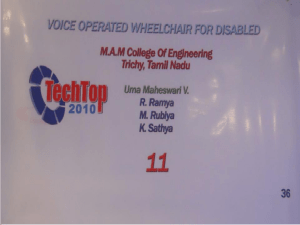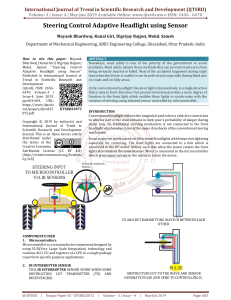Universal Motor Power control using AT89C2051
advertisement
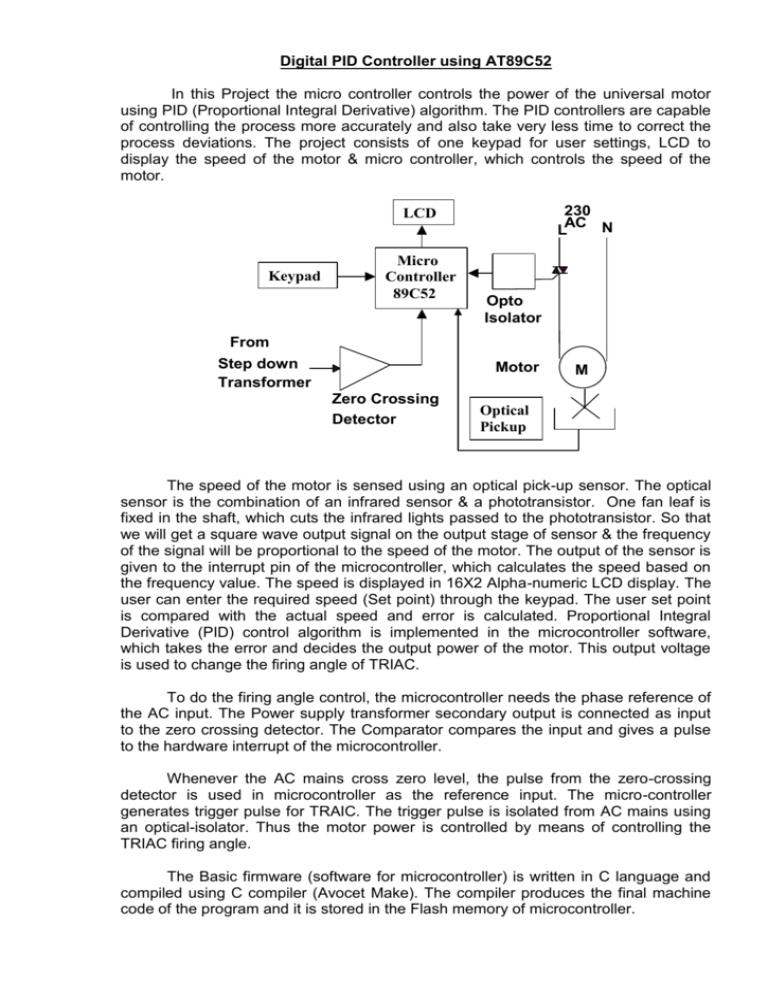
Digital PID Controller using AT89C52 In this Project the micro controller controls the power of the universal motor using PID (Proportional Integral Derivative) algorithm. The PID controllers are capable of controlling the process more accurately and also take very less time to correct the process deviations. The project consists of one keypad for user settings, LCD to display the speed of the motor & micro controller, which controls the speed of the motor. 230 AC N LV LCD Keypad Micro Controller 89C52 Opto Isolator From Step down Transformer Motor Zero Crossing Detector M Optical Pickup The speed of the motor is sensed using an optical pick-up sensor. The optical sensor is the combination of an infrared sensor & a phototransistor. One fan leaf is fixed in the shaft, which cuts the infrared lights passed to the phototransistor. So that we will get a square wave output signal on the output stage of sensor & the frequency of the signal will be proportional to the speed of the motor. The output of the sensor is given to the interrupt pin of the microcontroller, which calculates the speed based on the frequency value. The speed is displayed in 16X2 Alpha-numeric LCD display. The user can enter the required speed (Set point) through the keypad. The user set point is compared with the actual speed and error is calculated. Proportional Integral Derivative (PID) control algorithm is implemented in the microcontroller software, which takes the error and decides the output power of the motor. This output voltage is used to change the firing angle of TRIAC. To do the firing angle control, the microcontroller needs the phase reference of the AC input. The Power supply transformer secondary output is connected as input to the zero crossing detector. The Comparator compares the input and gives a pulse to the hardware interrupt of the microcontroller. Whenever the AC mains cross zero level, the pulse from the zero-crossing detector is used in microcontroller as the reference input. The micro-controller generates trigger pulse for TRAIC. The trigger pulse is isolated from AC mains using an optical-isolator. Thus the motor power is controlled by means of controlling the TRIAC firing angle. The Basic firmware (software for microcontroller) is written in C language and compiled using C compiler (Avocet Make). The compiler produces the final machine code of the program and it is stored in the Flash memory of microcontroller.



